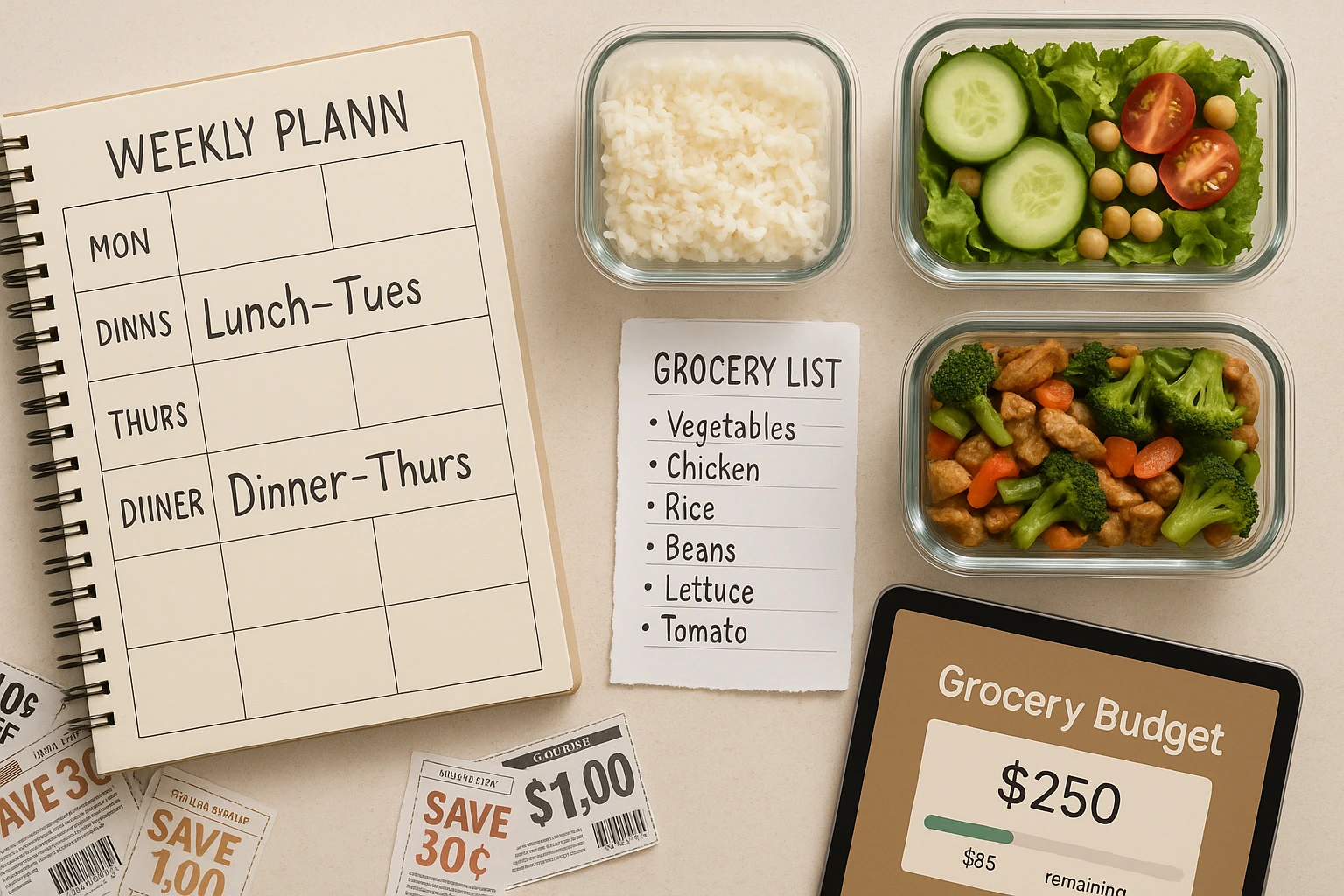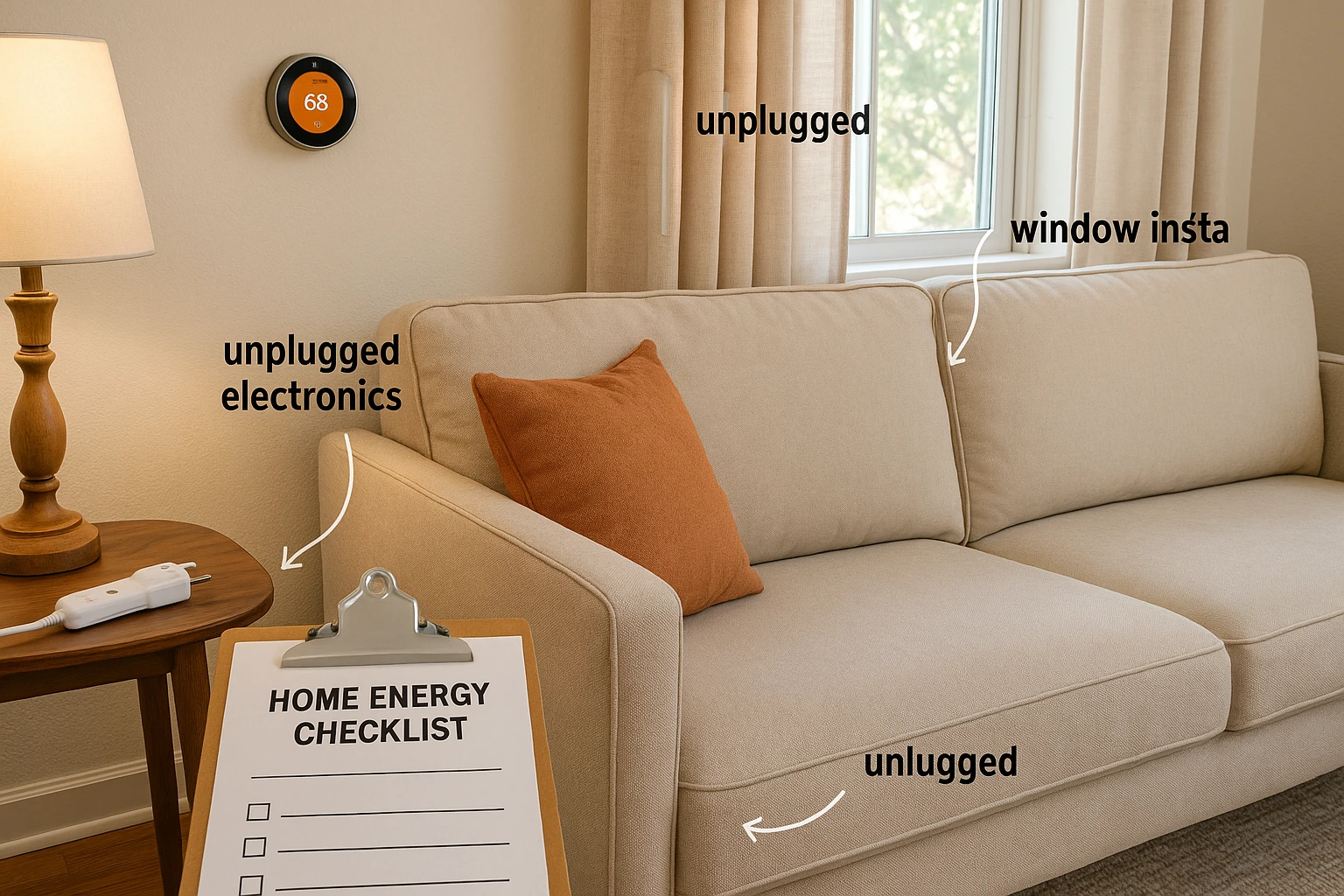10 Frugal Habits That Can Save You Over $500 a Month

Did you know 75% of Americans overspend by $200/month without realizing it? Consequently, adopting frugal habits that save money can transform your finances in 2025’s rising cost-of-living environment. What would an extra $6,000/year mean for you? Start now to secure your financial future!
Feeling the pinch? You’re not alone. Many people want practical steps that actually stick. This guide shares 10 realistic moves to save $500/month—$6,000/year—without feeling deprived. Let’s dive in!
Table of Contents
- Key Takeaways for Frugal Habits That Save Money
- Master Meal Planning: Frugal Habits That Save Money in Your Kitchen
- Slash Subscriptions: Frugal Habits That Save Money on Bills
- Boost Energy Efficiency
- DIY Repairs
- Earn Cashback on Purchases
- Enjoy Free (or Cheap) Entertainment
- Cut Commuting Costs
- Negotiate Bills and Rates
- Sell Unused Items and Declutter
- Leverage Referrals and Sign-Up Bonuses
- Total Potential Monthly Savings
- Interactive Savings Tracker
- Frequently Asked Questions
- Conclusion
Key Takeaways for Frugal Habits That Save Money
- Small changes stack into big wins.
- Meal planning and cooking at home slash food costs.
- Cutting subscriptions and choosing free fun are smart moves.
- Conserving energy and learning small DIY fixes reduce bills.
- Cashback and referrals add extra savings on everyday purchases.
Master Meal Planning: Frugal Habits That Save Money in Your Kitchen
Grabbing lunch out or ordering dinner on a whim adds up. Try a weekly meal plan and cook at home to keep more cash in your pocket. For additional strategies to stretch your budget, check out our guide on how to start living frugally in 2025.
Plan Your Weekly Meals
Make your plan before shopping. Think affordable dishes like chili or stir-fry—tasty and under $5 a serving. Get the family involved to make it fun.
Shop Smart for Savings
Write a list and stick to it. Hunt for sales, use coupons, and buy staples like rice or beans in bulk. These thrifty practices can cut your grocery bill by 20%.
Batch Cooking Efficiency
Cook larger batches on weekends for the week ahead. It saves time and curbs takeout temptation—an easy money-saving habit.
Repurpose Leftovers
Turn leftovers into new meals, like roasted chicken into tacos, or pack them for lunch. It reduces food waste and saves cash.
“A well-planned kitchen is a wealth-building machine.”
| Benefit | Explanation |
|---|---|
| Saves Money | Reduces restaurant and takeout spending. |
| Healthier Eating | Control ingredients and portions. |
| Saves Time | Batch cooking streamlines the week. |
| Reduces Waste | Less food waste means more savings. |
Estimated Monthly Savings: $100 – $200
Fun fact: Americans spend $3,526/year on dining out (BLS, 2024). Meal planning is a game-changer!

Slash Subscriptions: Frugal Habits That Save Money on Bills
Streaming, apps, and memberships can pile up. Review them regularly. Ask yourself:
Do I Use This Service?
Cancel anything you haven’t used this month. Check bank statements for forgotten charges.
Can I Share It?
Share streaming with family or a roommate to split costs.
Cheaper Alternatives?
Test lower-cost options. Free trials are fine—just set a reminder to cancel. For more help, see our list of free financial tools every saver should use.
Negotiate Rates
Call providers and ask for a discount. Companies often negotiate to keep customers.
Examples to Cut:
- Netflix, Hulu, Disney+
- Gym memberships
- Subscription boxes
- Software subscriptions
- Unused apps
Estimated Monthly Savings: $50 – $100
Boost Energy Efficiency: Lower Your Utility Bills
Saving energy helps your wallet and the planet. Small tweaks add up on your bill.
Switch to LED Bulbs
LEDs use far less power than incandescents. Consider a seasonal energy audit for more ideas.
Unplug Electronics
Stop “phantom” power drain by unplugging or using smart strips.
Adjust Thermostat Settings
Lower in winter or raise in summer. A smart thermostat can automate those changes.
Seal Drafts
Caulk and weatherstrip leaky windows and doors.
Estimated Monthly Savings: $30 – $50

DIY Repairs: Cut Home Maintenance Costs
Skip calling a pro for easy fixes. Learn a few basics and keep that cash. For how-to ideas, check This Old House or local workshops.
Fix Leaky Faucets
Drips waste water and money. A quick cartridge swap can solve it.
Patch Wall Holes
Repair small holes with spackle, a putty knife, and sandpaper.
Unclog Drains Yourself
Try a drain snake before calling a plumber.
Estimated Monthly Savings: $20 – $40
Jane, a single mom, saved $600 last year by mastering basic DIY!
Earn Cashback on Everyday Purchases
Cashback apps reward routine spending. Sign up for Rakuten (shop through their links) or Fetch (scan grocery receipts). Combine with store loyalty programs for extra value. For budgeting help, try minimalist budgeting tools for beginners.
Popular Cashback Apps
Use Rakuten, Ibotta, or Fetch for groceries and online buys.
Credit Card Rewards
Pick a solid cashback card—but pay in full monthly to avoid interest.
Estimated Monthly Savings: $20 – $30
Enjoy Free (or Cheap) Entertainment
Fun doesn’t have to be pricey. Tap into local options and library perks like Kanopy.
Visit Free Attractions
Watch for museum free days and park events.
Attend Community Events
Look for free concerts and festivals in your area.
Use Libraries
Borrow books, movies, and more—on the house.
Estimated Monthly Savings: $30 – $50
Cut Commuting Costs and Travel Smarter
Transportation is sneaky-expensive. Use GasBuddy to track fuel prices and plan better routes.
Carpool or Use Public Transit
Share rides or take the bus to reduce gas costs.
Bike or Walk
Short trips? Skip the car entirely.
Estimated Monthly Savings: $20 – $40
Negotiate Deals: Lower Bills and Rates
Haggling works. One reader cut their cable bill by $15/month with a single call.
Negotiate Insurance Rates
Ask your insurer about discounts or bundle options.
Shop Internet Providers
Compare plans, then call to match or beat the price.
Estimated Monthly Savings: $20 – $30
Sell Unused Items and Declutter
Turn clutter into cash. List items online or host a yard sale.
Sell Clothes Online
Try Poshmark or Depop for gently used clothes.
Host Yard Sales
Move furniture and household items fast with a weekend sale.
Estimated Monthly Savings: $30 – $50

Leverage Referrals and Sign-Up Bonuses
Referral programs add extra cash, and some banks offer generous sign-up bonuses.
Refer Friends
Invite friends to services you already use.
Sign-Up Bonuses
Watch for bank or card intro offers—but always read the fine print.
Estimated Monthly Savings: $10 – $30
Total Potential Monthly Savings
Here’s a conservative range:
- Meal Planning: $100 – $200
- Subscriptions: $50 – $100
- Energy Efficiency: $30 – $50
- DIY Repairs: $20 – $40
- Cashback: $20 – $30
- Entertainment: $30 – $50
- Transportation: $20 – $40
- Negotiation: $20 – $30
- Decluttering: $30 – $50
- Referrals: $10 – $30
Total Estimated Monthly Savings: $330 – $620
Interactive Savings Tracker
Assess your habits with this interactive tool to discover your savings potential!
Frequently Asked Questions
Let’s Wrap This Up: Kick Off Frugal Habits Today!
Hitting $500 a month in savings is very achievable with a few steady habits. Try dropping one subscription or adding a weekly meal plan and check your progress every Sunday. A simple spreadsheet or budgeting app will highlight your wins.
These habits do more than save money—they give you control. Imagine clearing debt, building an emergency fund, or investing for future goals with that extra $6,000 a year. Celebrate small victories—like shaving $20 off groceries—to keep motivation high and inspire friends to join you.
This content is for informational purposes only and not financial advice. Consult a professional before making financial decisions.

